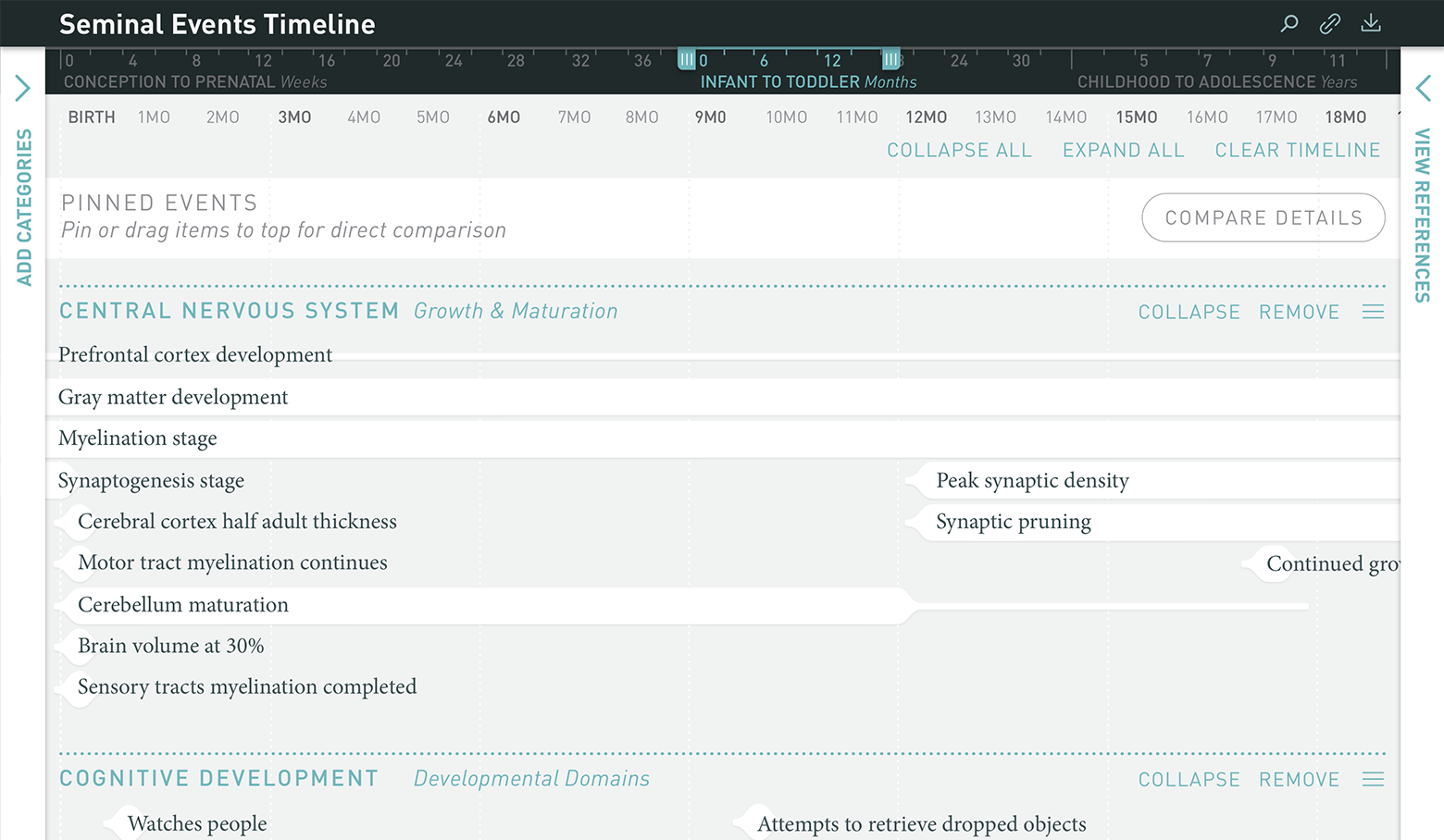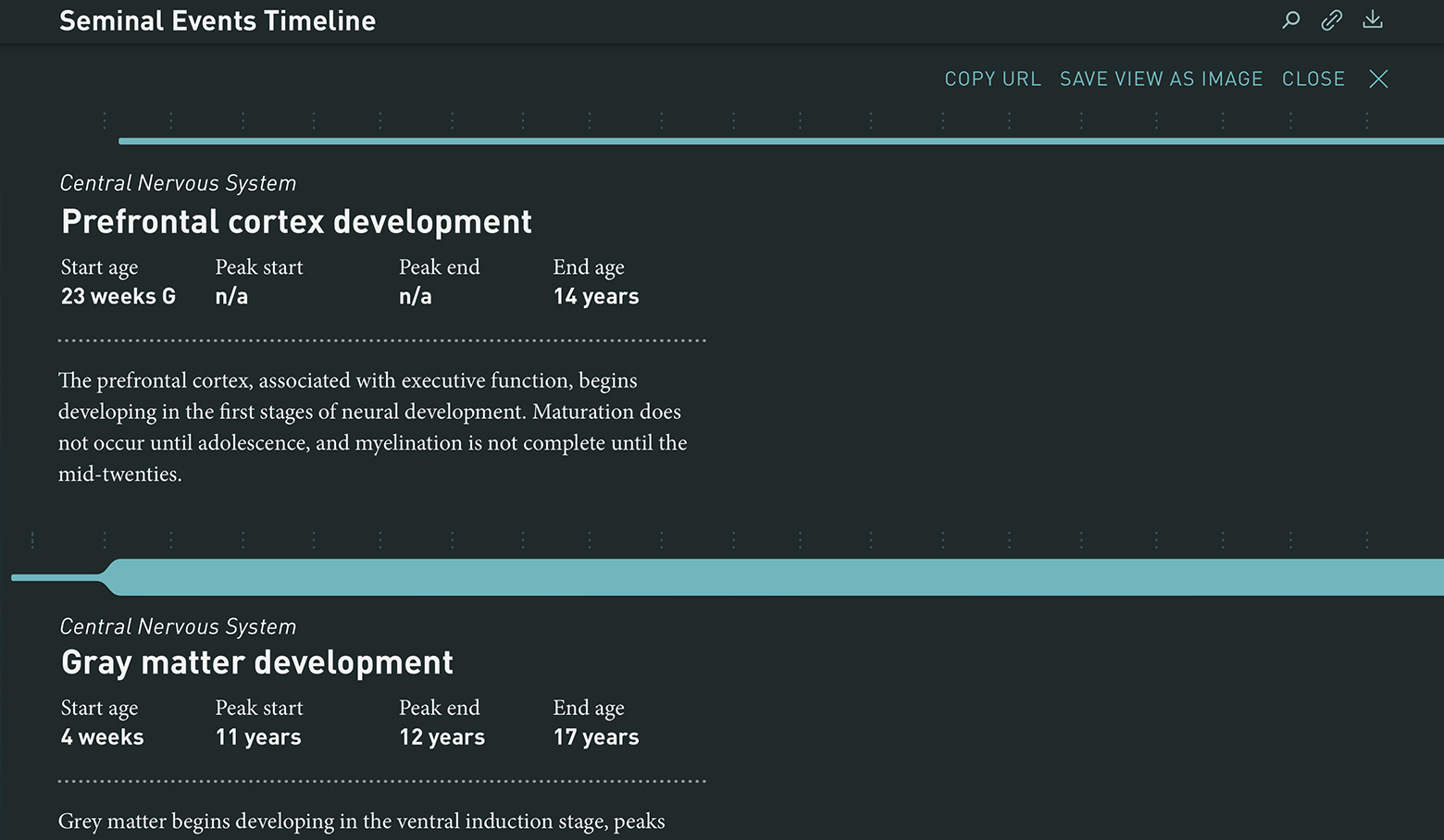The Ki Early Life Events and Outcomes Resource (ELEnOR), formerly known as the Seminal Events Timeline (SET), is a model designed to provide an organized, integrated map of biology and disease information to help global health workers identify information related to specific aspects of early childhood growth and development. The ELEnOR is meant to be an efficient basic tool that can highlight existing knowledge, identify gaps, and assist in generating hypotheses to advance research in the complex challenges of global health.
Researchers at UW START condensed information from 400 sources and created a detailed static knowledge map. The map described child growth from conception to puberty and showed the effects of disruptions on development. The map contained 483 information fields spanning 10 organ systems, 4 developmental domains, 38 adverse health outcomes, 53 risk factors, and 53 interventions.
The large size of the knowledge map made it difficult to access and use. Therefore, the START team collaborated with ki members to develop an interactive digital ELEnOR tool based on the static map. This type of interactive and collaborative knowledge map is being further evaluated for identifying internal and external expertise connections and hidden gaps that would improve global health decision making.
Intended Use
The tool is intended to facilitate collaboration, hypothesis development, and predictive modeling to improve our understanding of child growth and development.
A primary use case walk-through of Early Life Events and Outcomes Resource (formerly known as Seminal Events Timeline)
Start Date
April, 2016
Stage of Development
Design & Development
Team Members
R. Scott McClelland, MD, MPH, Diana Tordoff (UW START), Simrun Grewal (UW START), Chad P. Hall, MDes, Kristine Johnson, MAMS



